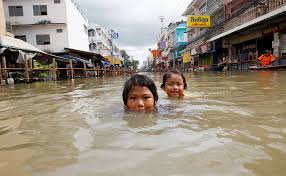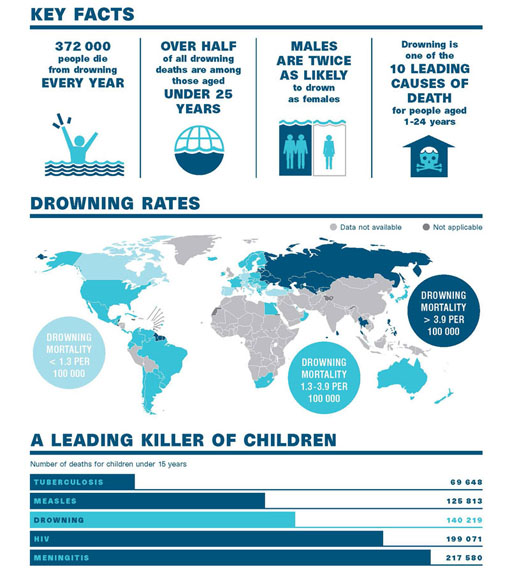UN report shows drowning claims over 40 people every hour in ‘needless loss of life’

The first United Nations World Health Organisation (WHO) report on drowning reveals that more than 370,000 people drown every year in bathtubs, buckets, ponds, rivers, ditches and pools as people go about their daily lives in a “serious and neglected public health threat.”
According to the Global Report on drowning: Preventing a leading killer “this death toll is almost two thirds that of malnutrition and well over half that of malaria – but unlike these public health challenges, there are no broad prevention efforts that target drowning.
“Drowning is a serious and neglected public health threat claiming the lives of 372,000 people a year worldwide,” which translates into more than 40 people every hour.
More than 90% of these deaths occur in low- and middle-income countries such as Bangladesh, Cambodia, China, India, Philippines, Thailand and Vietnam, the report said, and the highest rates for drowning are among children under five years of age.
According to WHO Director-General Dr Margaret Chan "efforts to reduce child mortality have brought remarkable gains in recent decades, but they have also revealed otherwise hidden childhood killers. Drowning is one. This is a needless loss of life.”
“Action must be taken by national and local governments to put in place the simple preventive measures articulated by WHO."
The report recommends strategies for local communities including: “installing barriers to control access to water; providing safe places such as day care centres for children; teaching children basic swimming skills and training bystanders in safe rescue and resuscitation.
“At national level, interventions include: adoption of improved boating, shipping and ferry regulations; better flood risk management and comprehensive water safety policies."

Risk factors, preventative actions
Former New York City Mayor Michael R. Bloomberg, whose foundation funded the report, stated "I believe that you can’t manage what you don’t measure – and there’s never been a comprehensive effort to measure drowning around the world until now.
“The more evidence we can gather, the better we’ll be able to tailor our prevention efforts - and the Global Report on drowning is a big step in the right direction,” he said.
Dr Etienne Krug, WHO Director for the Department for Management of Non-communicable Diseases, Disability, Violence and Injury Prevention, stated “almost all water presents a drowning risk, particularly inside and around our homes.
“Drowning occurs in bathtubs, buckets, ponds, rivers, ditches and pools, as people go about their daily lives. Losing hundreds of thousands of lives this way is unacceptable, given what we know about prevention."
The WHO also highlights alarming studies from high-income countries which suggest that deaths due to drowning may be considerably underestimated with official data not including drowning from suicide, homicide, flood disasters or incidents such as ferry capsizes.
The report also draws attention to the need to make drowning prevention an integral part of a number of debates, such as climate change which leads to increased flooding; mass migrations, including of asylum seekers travelling by boat; and issues such as rural development and water and sanitation.
Improving coordination across these various agendas will save lives, according to the WHO.
Image shows children in danger during the Thai floods of 2011.
22nd September 2014 - SRI LANKAN LIFE SAVING REPORT RELEASE TO COINCIDE WITH BOXING DAY TSUNAMI ANNIVERSARY
1st July 2014 - MALAYSIA TO HOST WORLD CONFERENCE ON DROWNING PREVENTION 2015
29th October 2011 - ASIAN FLOODS EXPOSE CHILD DROWNING 'EPIDEMIC'
15th March 2011 - WORLD CONFERENCE ON DROWNING PREVENTION 2011
2nd April 2008 - DROWNING BIGGEST KILLER OF ASIAN CHILDREN






